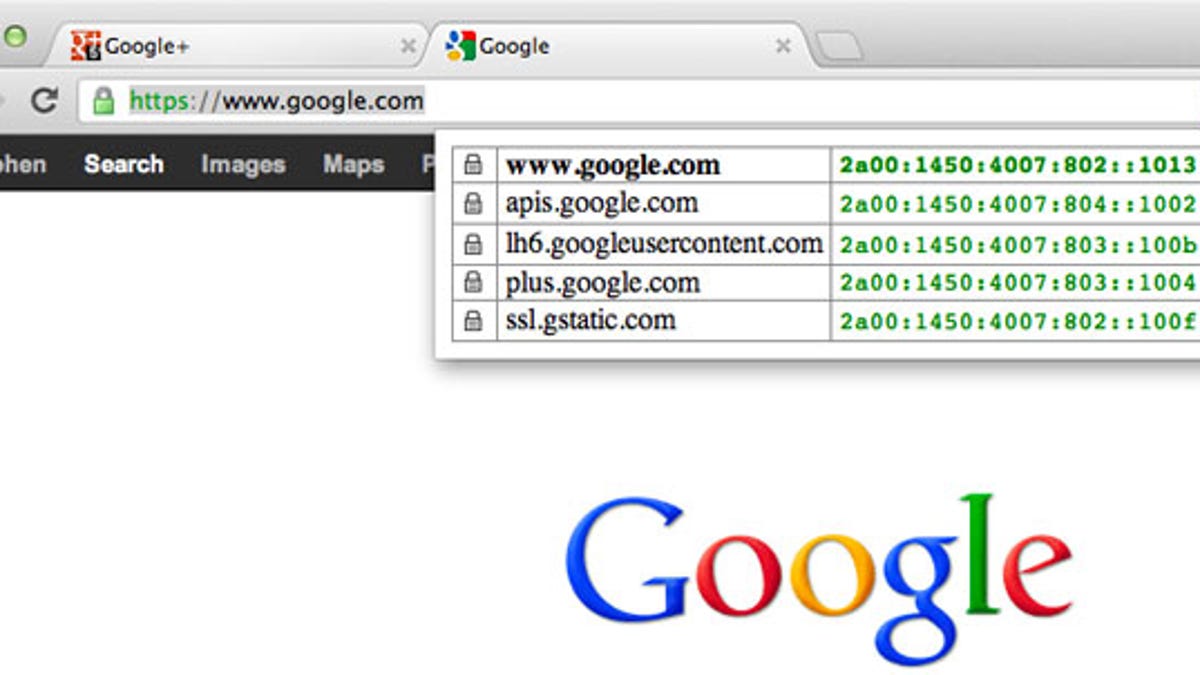Internet lights up with new IPv6 connections
The next-generation Internet technology has been gradually arriving for years, but it takes a big step forward today with the World IPv6 Launch event.

The next-generation Internet technology called IPv6, vastly more accommodating than its predecessor, began arriving for a small but significant fraction of Internet users today.
Several technology powerhouses are trying to encourage adoption the IPv4 sequel through an Internet Society event called the World IPv6 Launch that began today. (Well, actually it started at 5 p.m. PT yesterday -- blame the time-zone complications of global events.)
But start it did. The organizers want to keep tabs on the IPv6 performance during this sensitive introductory phase, and their data shows the arrival of IPv6 connections.
I use the IPvFoo Chrome extension to keep an eye on IPv6 services -- something I can do since my ISP can use it. It showed Google and Facebook already offering IPv6 on major sites such as Bing.com, Google.com, Gmail.com, and YouTube.com. Earlier, I'd have to use IPv6-specific addresses such as http://ipv6.google.com/ to get IPv6 services.
Jason Fesler, Yahoo's IPv6 evangelist, estimated that for sites that offer content over IPv6, about half a percent of data will actually be delivered using it. But that should rapidly increase as the months go by: In a year, the fraction should be "in the realm of 10 to 15 percent."
The idea behind the IPv6 launch event is to encourage Internet service providers, Web site operators, and the general public to embrace IPv6. To try to get things rolling, IPv6 launch participants including Microsoft, Facebook, Google, and Yahoo started permanently sharing content from their main Web sites using IPv6, and companies like Comcast started connecting a fraction of their customers with IPv6.
IPv6, aka Internet Protocol version 6, provides vastly more network addresses than IPv4, which is running out of them. The IPv4 address exhaustion complicates matters for those who want to link new homes or smartphones to the Net, and it makes it harder to write peer-to-peer software like videoconferencing that benefits from linking two direct endpoints on the Net. Switching on IPv6 has been a slow, expensive process, especially when there wasn't much reason to do so until recently, but many Internet powers tried to jump-start the IPv6 movement today with the World IPv6 Launch.
It's working, by some accounts. An Australian ISP, Internode, exceeded its goal of making IPv6 available to 1 percent of its customers, instead reaching 2 percent.
Ordinary people who want IPv6 probably need to be patient. Many ISPs don't offer it yet as an option, and many Web sites still don't supply content using IPv6.
Still, those who want it can take some measures to be ready, such as running a version of Mac OS X 10.2 or later or Windows Vista or later. (Windows XP SP2 has support, but it's not necessarily enabled.) Another step is to have a newer home network router plugged into your broadband connection; as part of the IPv6 event, D-Link and Cisco's Linksys committed to ship routers with IPv6 enabled.

